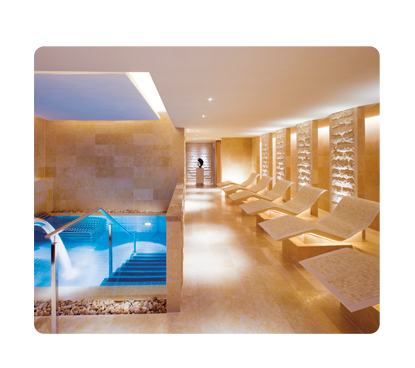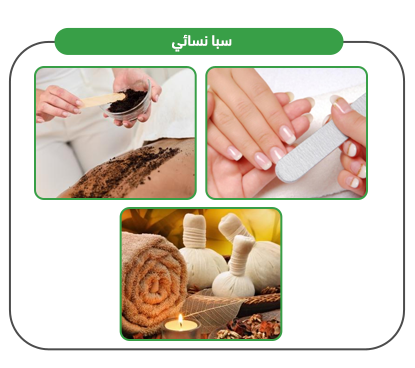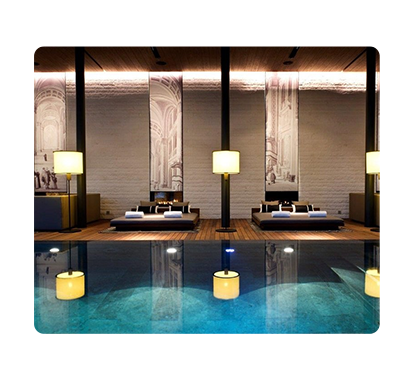A feasibility study for a women’s spa project with a capital of one million dollars from Mashroo3k Feasibility Studies Company. The project depends on establishing an integrated spa center that provides many cosmetic services for women (skin, body, and hair). The center includes the best devices with modern technologies to provide massage services, steam sessions, hair styling, nail care, steam rooms (sauna), Moroccan bath, and a makeup and cosmetics department.

A women’s spa project is considered a profitable business venture that generates a substantial financial return, given that Arab women are often obsessed with their appearance and beauty. Therefore, a women’s spa project feasibility study depends on providing the appropriate atmosphere and location, starting with the décor and colors, and moving on to the various equipment and services that make it a distinctive place for women, offering the utmost luxury and comprehensive beauty services. Given that such services require a long stay within the center, the center offers a buffet serving hot and cold drinks.

Moroccan bath services.<br>Skin and body scrub services.<br>Talion skin care services.<br>Talion body care services.<br>Hand and foot care.<br>Pedicure and manicure services.<br>Hair care services.<br>Hair treatment services.<br>Makeup.<br>Hot and cold beverages.


A unique and quiet place for women to gather.
Enjoy an atmosphere of psychological comfort and tranquility.
Provide distinctive and diverse beauty services for women.
Serve hot and cold beverages.
A professional and distinguished team.
Treat customers well and understand their needs.
Organization and sophistication in providing customer services.
Architectural elegance of the project.
Extreme care in maintaining operational supplies.
Building a strong relationship with customers, making the place their first choice.
Study the project’s concept, components, and nature.
Executive summary
Study project services/products
Market Size Analysis
Risk Assessment
Technical study
Financial study
Organizational and administrative study

Believing in the role of the entertainment sector in building non-rentier economies, Mashroo3k Economic and Management Consulting Company will present the following key sector indicators in the Gulf Cooperation Council (GCC) countries:
According to the latest statistics, there are 306 museums in the GCC countries, with 6,032,840 visitors.
There are 11,119 hotel establishments in the GCC countries.
In the Kingdom of Saudi Arabia,
There were 690 entertainment events, held over 9,784 days. These events were attended by 34,699,458 people.
There are 33 museums of archaeology, history, and heritage.
There are 195 private museums.
There are 8,499 archaeological sites, with 178,020 annual permits issued to visit these sites.
The entertainment sector is expected to contribute 4.2% of Saudi Arabia’s GDP in the coming years.
United Arab Emirates
According to the latest statistics, the number of museums has reached 41, and the number of visitors to these museums has reached 2,322,807.
There are 260 public parks.
In the Sultanate of Oman:
The number of museums has reached 12. The number of visitors to these museums currently exceeds 408,000.
In the Sultanate of Oman, there are 51 forts and castles, and the number of visitors to these castles and forts has reached 427,000.
In Qatar:
Looking at Qatar, we find that its sports facilities have reached 291. The largest number of these facilities are football stadiums, with 90, followed by indoor halls, with 37.
There are 99 cinemas, with a seating capacity of 14,108. According to the latest statistics, the number of films shown in these theaters reached 3,549.
The total annual number of visitors to museums and exhibitions in Qatar is 1,038,470.
In Kuwait:
The number of visitors to the Kuwait Tourism Enterprises Company, which provides numerous entertainment and recreational services, reached 1,308,514.
The number of visitors to museums in Kuwait reached 108,987.
There are 814 libraries in Kuwait, with a collection of more than 2,087,513 classified books.
GCC governments seek to improve the quality of life and provide a high level of well-being for the region’s citizens. To achieve this, they invest in the entertainment sector. In recent years, we have seen how these governments have adopted initiatives aimed at increasing the number of parks, live entertainment, and promoting the visual and audio arts.
The GCC leisure and hospitality construction market is expected to reach $642.3 billion by 2023, up from an estimated value of $466.9 billion in 2019.
According to the United Nations World Tourism Organization, the GCC is poised to welcome 195 million visitors by 2030.
Global Entertainment Sector
In 2021, the global entertainment and media market was valued at $2.34 trillion, and the market is expected to grow at a compound annual growth rate (CAGR) of 4.6%, reaching $2.93 trillion by 2026.

Mashroo3k Consulting recommends investing in the entertainment sector due to the following:
– In 2021, global video game revenues totaled $214.2 billion, and these revenues are expected to rise to $321.1 billion.
– Global cinema revenues are expected to grow by an average of 20.4% between 2021 and 2026.
– According to Citibank forecasts, investment opportunities in the metaverse will reach $13 trillion by 2030.
– Global spending on VR increased by 36.5% in 2021, reaching $2.6 billion, and spending is expected to increase at a compound annual growth rate of 24.1% between 2021 and 2026, reaching $7.6 billion.
Console game revenues grew at an average annual rate of 2.2% between 2021 and 2026.
PC game revenues grew at an average annual rate of 4.6% between 2021 and 2026.